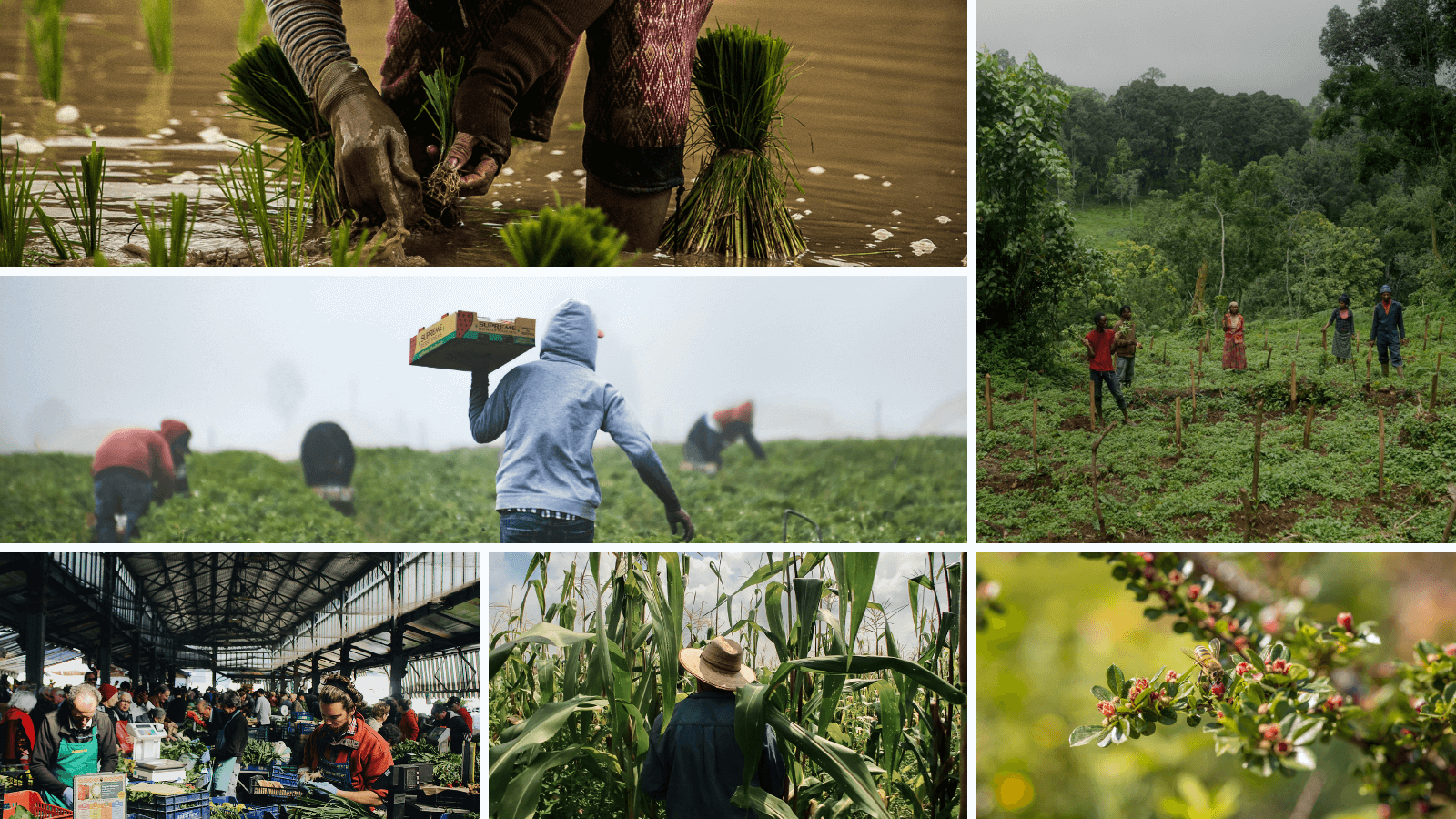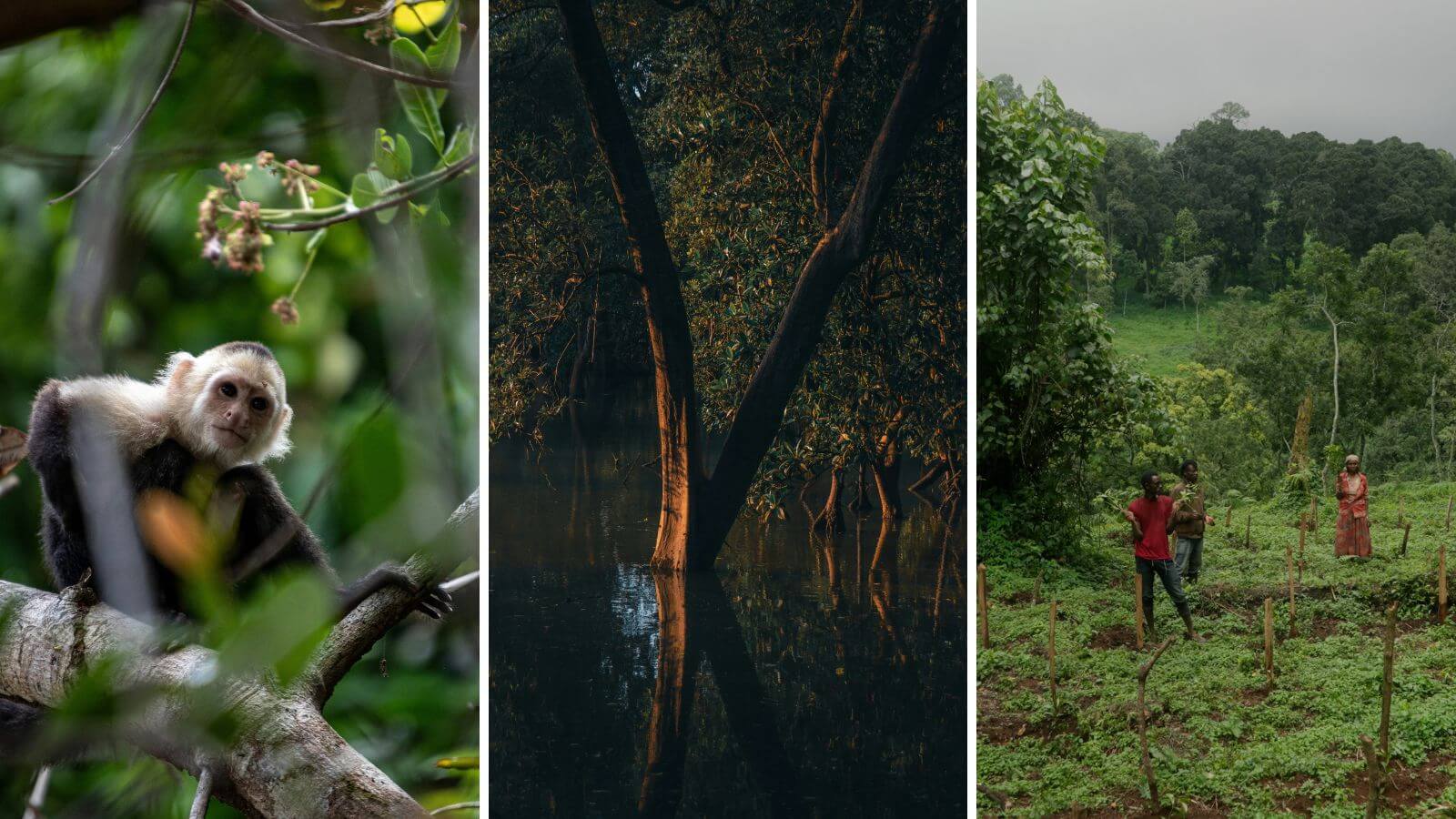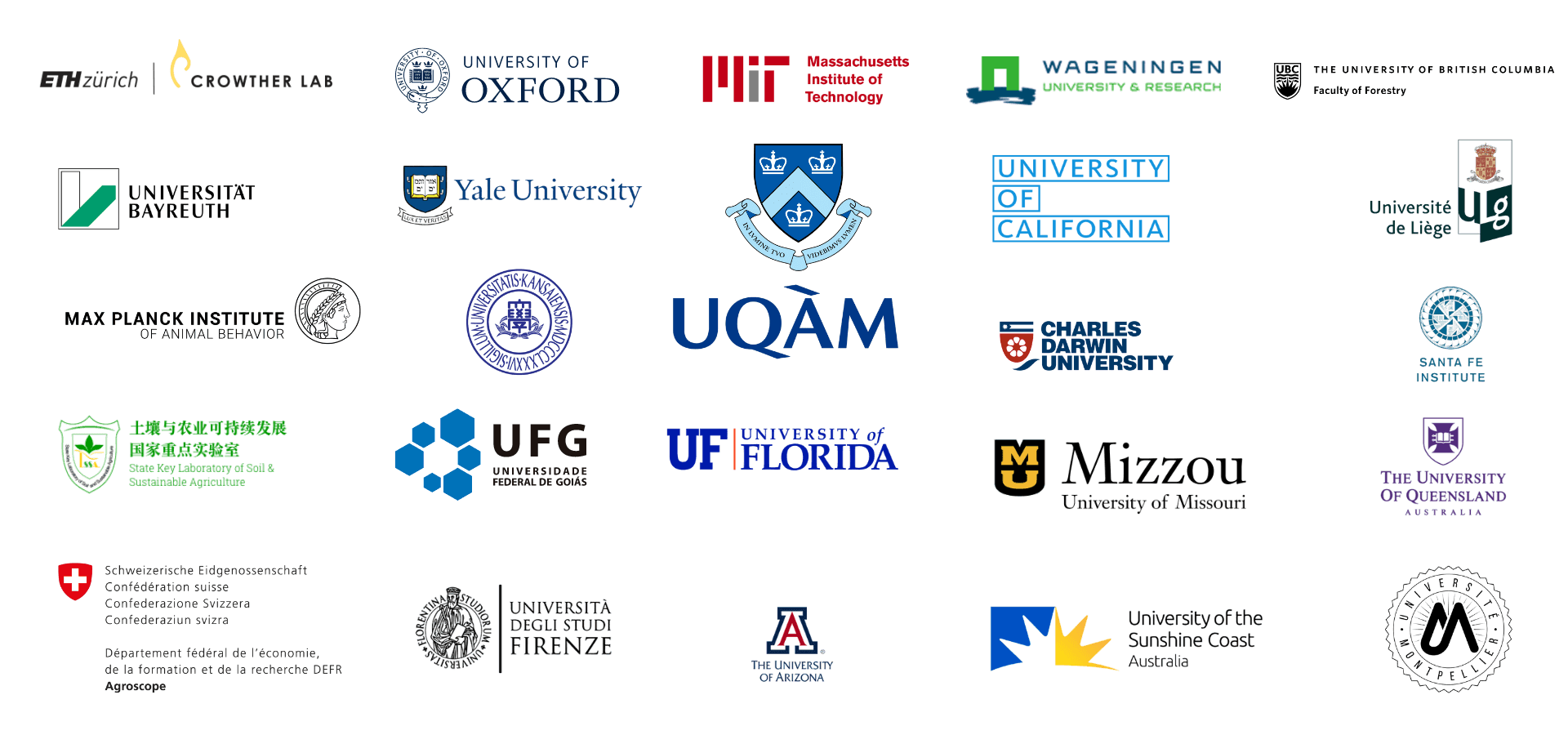For those of us who grew up watching David Attenborough on TV, the natural world feels like an inherently wonderful place that we need to save. This natural system is not only a source of inspiration, it has turned this planet from a ball of barren volcanic rock into a liveable utopia.
That may seem like an obvious sentiment. However, at this critical moment in our planet’s history – half-way through the UN’s Decade on Ecosystem Restoration – concerned people have been marching in the streets of major European cities, desperate to oppose the proposed EU Nature Restoration Law.
These marches are happening because people are worried that nature restoration will come at the expense of the land that we need for agriculture. If the costs of farming are forced to rise without equivalent increases in prices, then it could jeopardise our food security.

At no point in history has there been more pressure on farmers. They are responsible for feeding an ever growing population. And now we want them to save us all from the global climate and biodiversity crises, at the same time as market forces keep making the financial situation harder.
We desperately need land to support a resilient agricultural sector. We need our policies to empower farmers to be the heroes we need them to be.
But to do this, we are also going to need to save space for nature. And this is where science is telling us what farmers have known for generations: nature does not always come at the expense of agriculture. In fact, nature can sometimes be the best ally to farmers.
A growing number of farmers are introducing natural mixtures of plants and trees in order to improve soil quality, local climate and pollinator activity. And the scientific evidence shows that this can often enhance agricultural yields in many regions. In fact, you can now see thousands of local farmers across the globe are now employing regenerative permaculture, silviculture and agroforestry practices that work with nature to increase agricultural outputs.

And this positive effect of nature only becomes more and more important at the scale of landscapes or countries, because farms often perform better in landscapes that also contain natural ecosystems. Indeed, many scientists believe that it is the diversity of wild forests, peatlands, grasslands, oceans and wetlands that have stabilized our climate throughout the Holocene epoch, making a world where agriculture is even possible.
As a result, recent studies have suggested that agricultural productivity often increases in countries where forest cover is increasing. And the opposite trend has been also recorded in areas of Brazil, India, and Ethiopia, where agricultural productivity has fallen following the large-scale loss of nature.
A long line of civilizations, including Mesopotamian, Mayan, Easter Island and Ancient Greek have experienced a similar fate, where the extensive removal of nature has depleted soil fertility and destabilized the regional climate, contributing to the large-scale loss of agriculture. If we continue to lose natural ecosystems, we continue to jeopardize our food production system across the globe.
In the last two years years, thousands of scientists have encouraged European governments to enhance the protection of nature. The Society of Ecological Restoration has urged members of the European parliament to back the EU Nature Restoration law.
But it must be clear that the motivation to save nature is not only to fight biodiversity loss and climate change. It is also motivated by the need to save agricultural productivity.
To save food production on our planet, we must also save space for nature. Farmers are at the nexus of this challenge, because they are the custodians of land, which supports biodiversity AND provide us with food.
Policies like the EU restoration law could be vital as we strive to save nature, and secure agricultural productivity across Europe. But these policies will only work if they are built alongside farmers, to empower them to be the heroes we all need them to be. If governments can provide the right incentives, they can empower farmers to create a world where people and nature can thrive together.
Are you a scientist who wants to support this letter? You can do so here.

Prof. Dr. Thomas Crowther, Department of Environmental Systems Science, Institute of Integrative Biology, ETH Zurich, 8092 Zürich, Switzerland
Gayoung Yang, Department of Environmental Systems Science, Institute of Integrative Biology, ETH Zurich, 8092 Zurich, Switzerland
Lewis H. Ziska, Mailman School of Public Health, Columbia University, New York, NY 10032, USA
Christian Dupraz, ABSys, Univ Montpellier, INRAE, Institut Agro, Montpellier, France
Yuting Liang, State Key Laboratory of Soil and Sustainable Agriculture, Institute of Soil Science, Chinese Academy of Sciences, Nanjing, China
Terry Sunderland, Faculty of Forestry, University of British Columbia (UBC), Vancouver, Canada, Center for International Forestry Research (CIFOR), Bogor, Indonesia
Yuki Yamamoto, Faculty of Economics, Kansai University, 3-3-35 Yamate-cho Suita, Osaka, Japan
Wilma J. Blaser-Hart, School of the Environment, The University of Queensland, St Lucia, Queensland, Australia
Sonja Kay, Agroscope, Research Division Agroecology and Environment, 8046 Zurich, Switzerland
Jose Shibu, College of Agriculture, Food and Natural Resources, University of Missouri, Columbia, MO, USA
Adrian Gonzalez-Chaves, Insituto de Ciencias Biologicas, Universidade of Goiás, Brasil
Pauline Depoortere, TERRA Research Center, Gembloux Agro-Bio Tech, University of Liège, 5030 Gembloux, Belgium
Leland Werden, Department of Environmental Systems Science, Institute of Integrative Biology, ETH Zurich, 8092 Zurich, Switzerland
Johan van den Hoogen, Department of Environmental Systems Science, Institute of Integrative Biology, ETH Zurich, 8092 Zurich, Switzerland
Xianyu Yang, Department of Environmental Systems Science, Institute of Integrative Biology, ETH Zurich, 8092 Zurich, Switzerland
Katharina Runge, Department of Environmental Systems Science, Institute of Integrative Biology, ETH Zurich, 8092 Zurich, Switzerland
Lidong Mo, Department of Environmental Systems Science, Institute of Integrative Biology, ETH Zurich, 8092 Zurich, Switzerland
Yibiao Zou, Department of Environmental Systems Science, Institute of Integrative Biology, ETH Zurich, 8092 Zurich, Switzerland
Hans Verbeeck, Department of Environment, Ghent University, Belgium
Vladimír Šebeň, Department of forest management, National Forest centre, Forest research Institute, 96001 Zvolen, Slovak republic
Daisy Dent, Department of Environmental Systems Science, Institute of Integrative Biology, ETH Zurich, 8092 Zurich, Switzerland
Achim Walter, Department of Environmental Systems Science, Institute of Agricultural Sciences, ETH Zurich, 8092 Zurich, Switzerland
Jean-François Bastin, TERRA Research Center, Gembloux Agro-Bio Tech, University of Liège, 5030 Gembloux, Belgium
Andreas Hemp, Department of Plant Systematics, University of Bayreuth, 95440 Bayreuth, Germany
Javier G. P. Gamarra, International Consultant in Forestry Statistics
Josephine Reek, Department of Environmental Systems Science, Institute of Integrative Biology, ETH Zurich, 8092 Zurich, Switzerland
María Guadalupe Nava-Miranda, Programa de doctorado en Ingeniería para el desarrollo rural y civil. Escuela de Doctorado Internacional de la Universidad de Santiago de Compostela (EDIUS), 27002 Lugo, España
Sebastian Pfautsch, Urban Transformations Research Centre, Western Sydney University, Parramata, NSW 2150, Australia
Gert-Jan Nabuurs, Professor European forests. Wageningen Environmental Research, Wageningen University and Research, Netherlands
Martin Herold, GeoForschungszentrum Potsdam, University of Potsdam
Tran Van Do, Silviculture Research Institute, Vietnamese Academy of Forest Sciences, Hanoi, Vietnam
Eben N. Broadbent, Spatial Ecology and Conservation (SPEC) Lab, University of Florida, Florida, USA
Huanyuan Zhang-Zheng, Leverhulme Centre for Nature Recovery, University of Oxford, UK
Selvadurai Dayanandan, Concordia University, Montreal, Canada
Yadvinder Malhi, Leverhulme Centre for Nature Recovery, University of Oxford, UK
Sebastian Kepfer-Rojas, Department of Geosciences and Natural Resource Management, University of Copenhagen
Brian J. Enquist, Department of Ecology and Evolutionary Biology, University of Arizona, Tucson Arizona, AZ 85721, USA; The Santa Fe Institute, 1399 Hyde Park Rd, Santa Fe, NM 87501, Q1, USA
Francisco Navarro-Rosales, Department of Biology, University of Oxford, United Kingdom
Harriet Atherton, Environmental Change Institute, University of Oxford, UK
Tina Christmann, School of Geography and Environmental Sciences SOGES), University of Southampton Environmental Change Institute, University of Oxford
Karen Holl, Department of Environmental Studies, University of California, Santa Cruz
Jed Soleiman, School of Geography and Environment and Leverhulme Centre for Nature Recovery, University of Oxford, UK
Giorgio Alberti, Department of Agrifcultural, Food, Environmental and Animal Sciences, University of Udine, Italy
Alexandre F. Souza, Departamento de Ecologia, Universidade Federal do Rio Grande do Norte, Brazil
Cang Hui, Centre for Invasion Biology, Stellenbosch University, South Africa
Rong Liu, Department of System Ecology, Faculty of Science, Vrije University Amsterdam
Tommaso Jucker, School of Biological Sciences, University of Bristol, BS8 1TQ Bristol, UK
Roberto Cazzolla Gatti, Department of Biological, Geological, and Environmental Sciences (BiGeA), University of Bologna, Italy
Carlos A. Joly, Department of Plant Biology, University of Campinas, Brazil
Christian Salas-Eljatib, Departamento de Gestión Forestal y su Medio Ambiente, Universidad de Chile, Santiago, Chile
David Bauman, AMAP, Univ Montpellier, CIRAD, CNRS, INRAE, IRD, Montpellier, France Laboratoire d’Ecologie végétale et Biogéochimie, Université Libre de Bruxelles, Brussels, Belgium
Mirco Rodeghiero, Center Agriculture Food Environment, University of Trento, 38010 San Michele all’Adige, Italy
Jingjing Liang, Forest Advanced Computing and Artificial Intelligence Lab, Department of Forestry and Natural Resources, Purdue University, USA
Gabriel Smith, Department of Environmental Systems Science, Institute of Integrative Biology, ETH Zurich, 8092 Zurich, Switzerland
Robert M. McElderry, Department of Environmental Systems Science, Institute of Integrative Biology, ETH Zurich, 8092 Zurich, Switzerland
Jo Smith, MV Agroecological Research Centre, Moinhos de Vento de Baixo, Espírito Santo 7750-217, Portugal
Dmitry Schepaschenko, Agriculture, Forestry, and Ecosystem Services research group, International Institute for Applied Systems Analysis, Laxenburg, Austria
Rebecca Cole, Department of Environmental Systems Science, Institute of Integrative Biology, ETH Zurich, 8092 Zurich, Switzerland
Lalasia Bialic-Murphy, Department of Environmental Systems Science, Institute of Integrative Biology, ETH Zurich, 8092 Zurich, Switzerland
Filippo Bussotti, Department of Agri-Food, Environment and Forests. University of Firenze, Italy
Camille M. Montalcini, Department of Migration, Max Planck Institute of Animal Behavior, Radolfzell, Germany
Philippe Saner, Datascientist.ch, Walisellen, Switzerland
Laura Duncanson, Geographical Sciences, University of Maryland, College Park
Luciana F. Alves, Center for Tropical Research, Institute of the Environment and Sustainability, University of California, USA
Paul Smith, Botanic Gardens Conservation International (BGCI)
Marcos Silveira, Centro de Ciências Biológicas e da Natureza, Universidade Federal do Acre Laboratório de Botânica e Ecologia Vegetal
Laura van Galen, Department of Environmental Systems Science, Institute of Integrative Biology, ETH Zurich, 8092 Zurich, Switzerland
Frans Bongers, Forest Ecology and Forest Management Group, Wageningen University & Research, Wageningen, The Netherlands
Andrzej M. Jagodziński, Institute of Dendrology, Polish Academy of Sciences, Kórnik, Poland
Simone A. Vieira, Center for Environmental Studies and Research, University of Campinas, Brazil
Stephanie Mansourian, mansourian.org; University of Lausanne, Switzerland
Andrew R. Marshall, Forest Research Institute, University of the Sunshine Coast, Australia Reforest Africa, UK and Tanzania Flamingo Land, North Yorkshire, UK
Kaline de Melio, Research Institute for the Environment and Livelihoods, Charles Darwin University, Australia CSIRO, Australia
Mohammed Latif Khan, Department of Botany, Dr. Harisingh Gour Vishwavidyalaya (A Central University), Sagar- 470003, Madhya Pradesh, India
Ferry Slik, Environmental and Life Sciences, Faculty of Science, Universiti Brunei Darussalam, Gadong, Brunei Darussalam
Sara Löfqvist, Department of Environmental Systems Science, Institute of Integrative Biology, ETH Zurich, 8092 Zurich, Switzerland
Natalia Lukina, Center for Forest Ecology and Productivity, RAS
Alain Paquette, Centre for Forest Research, Université du Québec à Montréal, Montréal, Québec, Canada
Leila Mirzagholi, Department of Civil and Environmental Engineering, Massachusetts Institute of Technology
Bin Tuo, Department of Systems Ecology, Faculty of Science, Vrije University Amsterdam
Alexander C. Vibrans, Programa de Pós-Graduação em Engenharia Florestal, Universidade Regional de Blumenau, Blumenau, Santa Catarina, Brasil
Hans ter Steege, Naturalis Biodiversity Center, Leiden, the Netherlands
Michael Scherer-Lorenzen, Chair of Geobotany, Faculty of Biology, University of Freiburg, Freiburg, Germany
Pablo L. Peri, Instituto Nacional de Tecnlogía Agropecuaria (INTA). Universidad Nacional de la Patagonia Austral (UNPA)-CONICET, Río Gallegos, Santa Cruz, Argentina
Rachele Quaglino, Department of Biology, ETH Zurich, 8092 Zurich, Switzerland
Constantin M. Zohner, Department of Environmental Systems Science, Institute of Integrative Biology, ETH Zurich, 8092 Zurich, Switzerland
Camille Fournier de Lauriere, Institute of Science, Technology and Policy (ISTP), ETH Zurich, Universitätstrasse 41, 8092 Zürich, Switzerland
Yohana Jimenez, Instituto de Ecología Regional, Universidad Nacional de Tucumán (UNT)- Consejo Nacional de Investigaciones Científicas y Técnicas (CONICET), CC. 34, 4107, Yerba Buena, Tucumán, Argentina
Carolina Bello, Department of Environmental Systems Science, Institute of Integrative Biology, ETH Zurich, 8092 Zurich, Switzerland
Dave Stanton, School of Biosciences, Cardiff University, UK
Bronson W. Griscom, Center for Natural Climate Solutions, Conservation International, Arlington, Virginia, United States of America
Pablo L. Peri, Instituto Nacional de Tecnlogía Agropecuaria (INTA). Universidad Nacional de la Patagonia Austral (UNPA)-CONICET, Río Gallegos, Santa Cruz, Argentina
Peter B. Reich, Institute for Global Change Biology and School for the Environment and Sustainability, University of Michigan; and Department of Forest Resources, University of Minnesota
Anna K. Schweiger, Department of Land Resources and Environmental Sciences, Montana State University, Bozeman, MT, USA
Miroslav Svoboda, Faculty of Forestry and Wood Sciences, Czech University of Life Sciences, Praha 6 Suchdol, Czech Republic
Camille S. Delavaux, Department of Environmental Systems Science, Institute of Integrative Biology, ETH Zurich, 8092 Zurich, Switzerland
